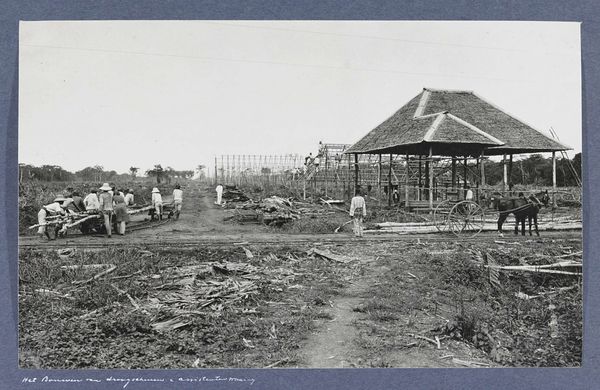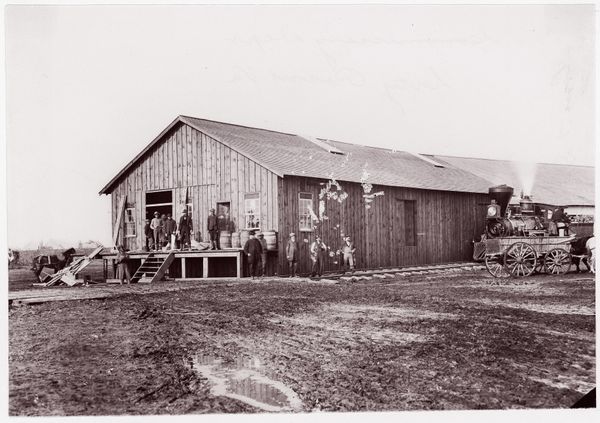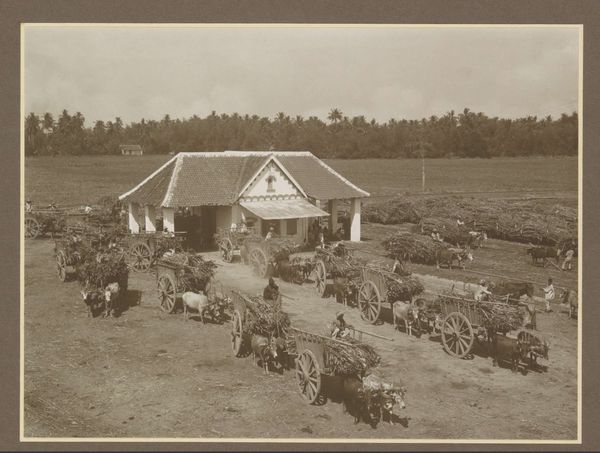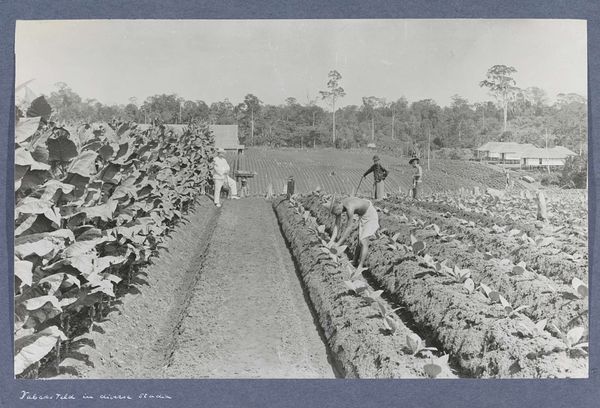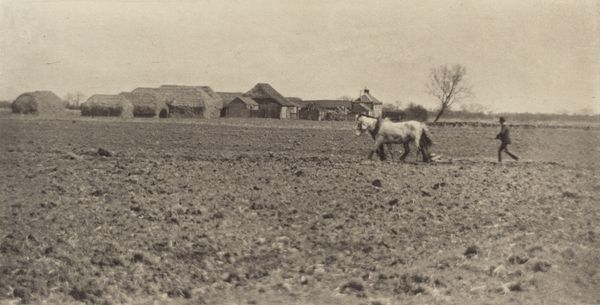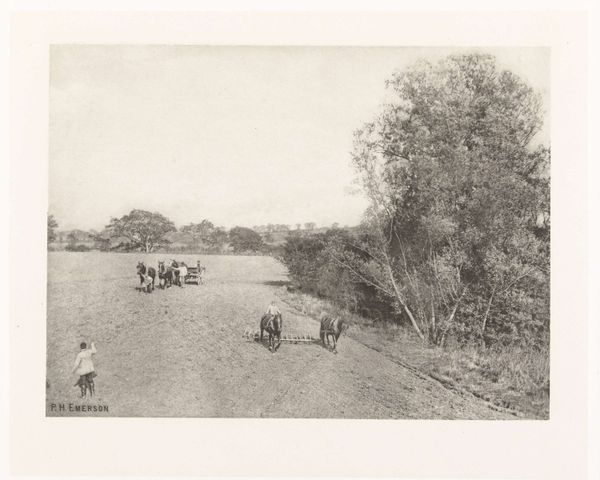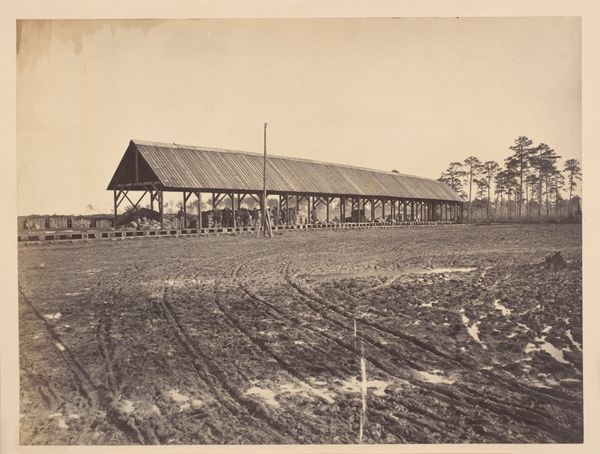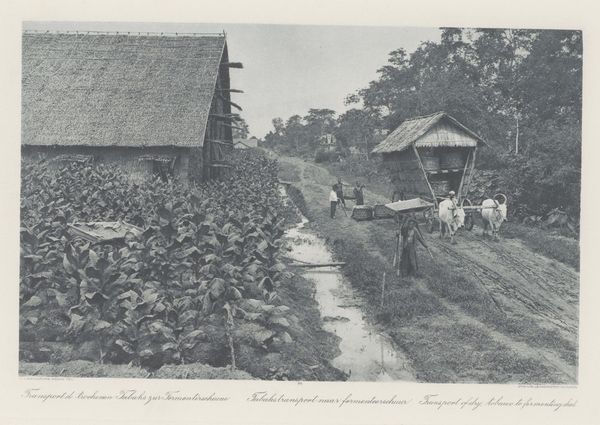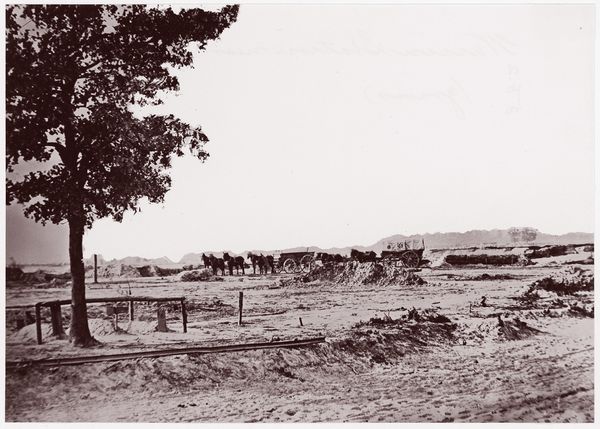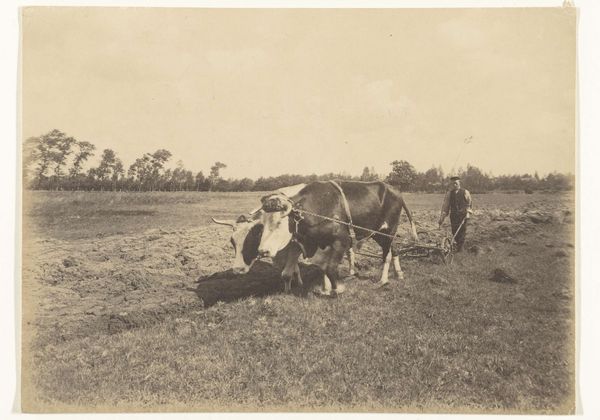
Planten van tabak met ossenwagen op een plantage op Sumatra c. 1900 - 1915
0:00
0:00
carljkleingrothe
Rijksmuseum
photography
#
dutch-golden-age
#
landscape
#
photography
#
historical photography
#
genre-painting
Dimensions: height 178 mm, width 285 mm
Copyright: Rijks Museum: Open Domain
Editor: This is an interesting photograph titled "Planten van tabak met ossenwagen op een plantage op Sumatra", taken around 1900-1915 by Carl J. Kleingrothe. The black and white image depicts a tobacco plantation in Sumatra with an ox-drawn carriage and workers. It strikes me as having a documentary feel, like a historical record. What compositional elements stand out to you? Curator: Initially, the tonal range is notable; consider the gradations of gray. These offer not only definition of forms but provide the image with a pervasive atmosphere that invites a reading of the workers and structures within a semiotic grid. The positioning of the ox-cart near the middle-ground plane also draws the eye toward the horizon. How do the foreground details contribute to this visual arrangement? Editor: The foreground, with its figures and details of the earth, acts almost like an entry point, guiding us into the depth of the plantation. I’m curious about the repetition of forms within the composition. Curator: Precisely. The horizontal lines of the architecture in the background, along with the repeated verticals of the tobacco plants create a calculated rhythm. Ask yourself, what purpose might these forms play in the creation of spatial perspective, or perhaps how they invite interpretation of class tensions? Editor: That’s a very helpful way to analyze it, I hadn’t considered how those lines are guiding me, or their possible role in expressing class structure. It gives the image so many layers of interpretation through its basic form! Curator: Yes. The photograph isn’t just a representation, it's a crafted structure and form where meaning emerges from the formal relations established within its borders. We learn so much from examining not just *what* is depicted, but *how*. Editor: I agree; thinking about it as constructed relationships gives us much more to discuss. Curator: Indeed, a lens through which a discourse emerges from the structure and texture that defines what we ultimately interpret.
Comments
No comments
Be the first to comment and join the conversation on the ultimate creative platform.
